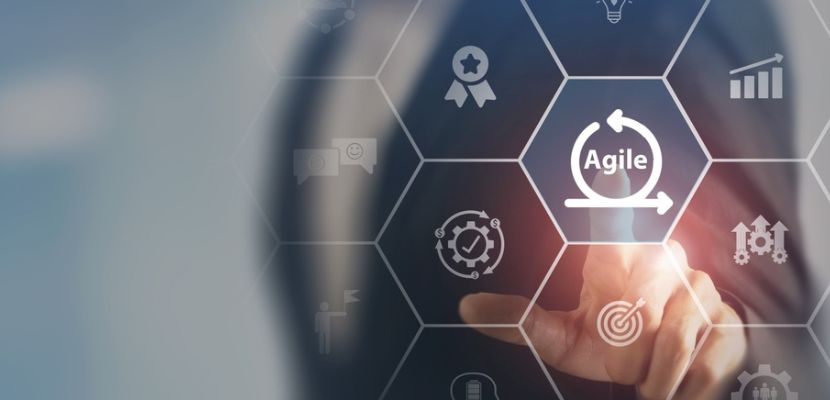The Product Development Life Cycle (PDLC) is a structured process that guides the creation and evolution of a product, from initial concept to launch and beyond.

What Is Product Development Life Cycle?
The product development life cycle (PDLC) is a comprehensive framework that outlines a product's sequential stages from its inception to its eventual market release and subsequent iterations. It starts with the generation of ideas, where concepts are explored and evaluated for feasibility and alignment with business objectives. Once an idea is selected, it moves into the design and development phase, where technical specifications are defined, prototypes are created, and the foundational aspects of the product are built. During this stage, cross-functional collaboration between teams, such as engineering, marketing, and design, ensures that the product meets both technical and customer expectations.
Product Development Life Cycle vs. Product Life Cycle
The product development life cycle focuses on the stages of creating a product, from ideation to design, development, testing, and launch. It emphasizes the internal processes required to bring a product to market and typically concludes once the product is released.
In contrast, the product life cycle (PLC) refers to the broader journey of the product after it has been launched, covering its introduction, growth, maturity, and eventual decline in the market. While the PDLC is concerned with how a product is built and prepared for release, the PLC tracks its performance, adoption, and eventual phase-out over time, highlighting market dynamics and consumer demand shifts.
Factors that Influence the Product Development Life Cycle
Several factors influence the PDLC, each playing a crucial role in shaping how a product is conceptualized, developed, and brought to market. These factors impact the speed, efficiency, and success of the product development process:
- Market demand. The need for a product or solution in the market drives the entire development process. High demand accelerates development timelines, while a lack of clear demand might result in delays or cancellations. Understanding market trends, customer needs, and potential competition is essential to shaping product features and positioning.
- Technology advancements. Technological capabilities directly influence what can be developed. Advances in technology open new possibilities for product innovation or efficiency, while outdated technology limits development potential. Developers must stay informed of the latest technologies to ensure the product remains competitive and scalable.
- Resource availability. The availability of resources, including skilled personnel, materials, and financial backing, significantly affects the speed and quality of product development. Limited resources lead to delays or compromises in design and development, while ample resources allow for faster progress and better-quality output.
- Regulatory and compliance requirements. Depending on the industry, products must often adhere to specific regulations and standards. Compliance with safety, environmental, and data privacy regulations adds complexity and time to the development cycle. Failure to meet regulatory requirements can lead to costly delays or legal challenges.
- Competition. The presence of competitors can drive innovation and urgency in the PDLC. Suppose competitors are developing similar products or have already introduced alternatives. In that case, there may be pressure to accelerate development, refine product features, or differentiate in ways that appeal to the target market.
- Customer feedback. Input from potential users during the development process is critical in refining features, usability, and performance. Early feedback through beta testing or prototypes helps developers make informed adjustments, ensuring the product better meets user expectations.
- Economic conditions. Economic factors, such as market stability, inflation, and consumer spending, influence both the product development process and its launch timing. In an economic downturn, companies may delay product launches or adjust development strategies to minimize risk, while favorable economic conditions may encourage faster progression.
- Internal organizational factors. The culture, structure, and processes within the organization developing the product are also important. A company's development methodology (e.g., Agile vs. Waterfall), decision-making speed, cross-team collaboration, and management support all influence how smoothly the product moves through its development stages.
- Time-to-market pressure. The urgency to introduce a product to market greatly affects the PDLC. Companies often face pressure to beat competitors or meet specific market windows, which can lead to accelerated development timelines. However, rushing the process might compromise product quality or completeness.
- Risk management. Identifying and mitigating risks associated with product development, such as technical failures, budget overruns, or unforeseen market changes, is vital. Proper risk management ensures that potential challenges are addressed early, preventing significant disruptions to the development process.
Product Development Life Cycle Stages
The product development life cycle consists of several key stages that guide a product from initial concept to market release and beyond. Each stage plays a critical role in ensuring the product is feasible, meets customer needs, and delivers long-term value. Understanding these stages helps streamline the development process, reduce risks, and improve the chances of a successful product launch.
Idea Generation
This is the initial stage of the product development life cycle, where new ideas are brainstormed and conceptualized. It often begins with identifying a gap in the market, customer needs, or a problem that needs solving. Input from various sources, such as customers, competitors, and internal teams, helps fuel creativity. The goal is to come up with innovative concepts that have potential value and align with business goals. This stage is exploratory and open-ended, with many ideas being considered before selecting the most promising ones for further development.
Research and Feasibility Study
Once a viable idea is identified, the next step is to conduct thorough research and feasibility analysis. This involves market research to understand the target audience, competitors, and potential demand. Simultaneously, a technical feasibility assessment is conducted to determine if the idea can be realistically developed within the company's capabilities, resources, and budget. Financial viability is also evaluated to ensure the product will generate a return on investment. This stage helps filter out impractical ideas and provides a clearer direction for moving forward.
Concept Development and Design
After the feasibility study, the concept is refined, and detailed design work begins. This involves creating technical specifications, product architecture, and initial prototypes. Designers and engineers collaborate to translate the idea into tangible features and functionalities. User experience (UX) and user interface (UI) design also play a key role at this stage to ensure the product is intuitive and user-friendly. The design phase lays the foundation for how the product will look, feel, and operate, with multiple iterations often necessary to refine the concept before development begins.
Development
In this stage, the actual product is built based on the specifications from the design phase. Engineers and developers work on coding, hardware development (if applicable), and system integration. This phase is typically divided into smaller tasks and follows a specific development methodology, such as Agile or Waterfall. The goal is to transform the design into a functioning product. Close collaboration between development teams and quality assurance is important to ensure that the product is being built correctly and that any issues are identified and resolved early in the process.
Testing and Validation
Once the product is developed, it moves into the testing phase, where it undergoes rigorous evaluation to ensure it functions as intended. This includes various types of testing, such as functionality testing, usability testing, performance testing, and security testing. The aim is to identify and fix any bugs or issues before the product reaches the market. User acceptance testing (UAT) may also be conducted to gather feedback from actual users and make final adjustments. A successful testing phase is crucial to ensuring the product is reliable, secure, and ready for launch.
Launch and Market Introduction
After passing through testing, the product is ready for launch. This stage involves preparing for the product’s introduction to the market, which includes finalizing marketing strategies, distribution plans, and sales channels. The launch requires coordinating with various departments, such as marketing, sales, and customer support, to ensure a smooth release. Depending on the scale of the product, a full market launch or a limited roll-out (soft launch) may occur to gauge initial customer reception and adjust the strategy if needed.
Post-Launch and Maintenance
After the product is launched, it enters the post-launch phase, which involves continuous monitoring and maintenance. Customer feedback, product performance, and sales data are analyzed to evaluate the product's success. This stage may involve releasing updates, patches, or new versions based on user feedback and technological advancements. Ongoing maintenance ensures that the product continues to function well and meet evolving customer needs. Additionally, this stage may lead to further development cycles if significant improvements or new features are planned for future releases.
Product Development Life Cycle Best Practices

Following best practices throughout the PDLC is essential for maximizing efficiency, reducing risks, and ensuring a high-quality product that meets customer expectations. These practices help streamline the process, encourage collaboration, and foster innovation while keeping the project on track from concept to launch:
- Post-launch monitoring and feedback integration. Launching the product isn’t the final step. Continuously monitoring user feedback, market performance, and potential issues after the release is vital for ensuring the product’s long-term success. Incorporating this feedback into future updates and versions allows the product to evolve and meet changing market demands.
- Cross-functional collaboration. Encouraging communication and collaboration between different teams—such as design, development, marketing, and sales—ensures that all aspects of the product are considered from the start. This holistic approach helps prevent siloed decision-making and promotes alignment between technical development and business objectives, leading to a product that better meets market needs.
- Customer-centric approach. Keeping the end user in mind throughout the PDLC is critical for developing a product that resonates with its target audience. Engaging customers early through surveys, focus groups, or prototypes provides valuable insights into their pain points, ensuring that the product solves real-world problems and enhances user satisfaction.
- Agile methodology. Adopting an Agile development methodology allows teams to work in iterative cycles, making it easier to adapt to changes in requirements, feedback, or market conditions. Agile practices, such as regular sprints and reviews, promote flexibility, continuous improvement, and faster time-to-market while maintaining product quality.
- Thorough testing at every stage. Testing should not be limited to the final stages of development. Continuous testing throughout the PDLC, from early prototypes to post-launch updates, ensures issues are identified and resolved early, reducing costly fixes later. Incorporating both automated and manual testing methods helps ensure that the product is functional, reliable, and secure.
- Clear documentation and requirements. Maintaining clear and thorough documentation throughout the PDLC ensures that all stakeholders have a shared understanding of the product’s goals, specifications, and progress. Well-defined requirements at the outset help prevent scope creep and miscommunication, keeping the development process focused and on track.
- Risk management. Identifying potential risks early in the development cycle is crucial for preventing costly delays or project failures. A proactive approach to risk management—such as conducting risk assessments, scenario planning, and having contingency plans—enables teams to address challenges before they escalate, ensuring product development remains smooth.